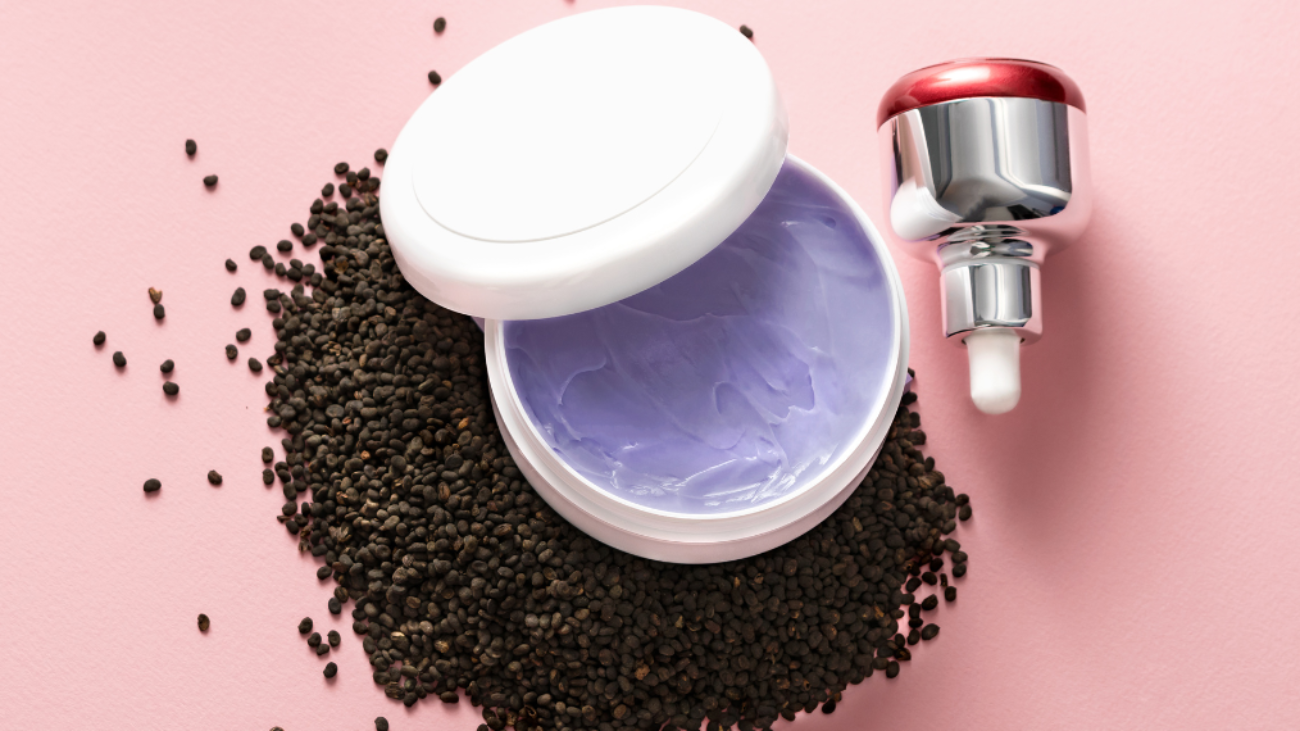
Hey there, skincare enthusiasts! Let’s chat about a little ingredient that’s causing quite the buzz in the beauty world – bakuchiol!

What is Bakuchiol?

To truly appreciate the marvels of bakuchiol, it’s essential to understand its botanical origins and chemical composition. Bakuchiol is extracted from the seeds and leaves of the Psoralea corylifolia plant. This plant has a long history of medicinal use in Ayurvedic and traditional Chinese medicine, revered for its anti-inflammatory, antibacterial, and skin-regenerating properties.
Think of it as your skin’s new best friend – gentle, reliable, and oh-so-effective! Unlike its synthetic counterparts, bakuchiol offers a natural and sustainable alternative for those seeking effective skincare solutions without compromising on purity or efficacy, making it a total powerhouse for your skin!
The Science Behind Bakuchiol

Unlike retinol, which can be a bit harsh on sensitive skin, bakuchiol takes a more chill approach! While retinol can be a bit intense for sensitive skin, bakuchiol takes a gentler approach, making it perfect for all skin types.
Benefits of Bakuchiol for the Skin

Let’s talk benefits, shall we? Bakuchiol isn’t just your average skincare ingredient – it’s a multitasking marvel that does it all. Here’s some reasons why you’ll love it:
- Collagen Boost: Bakuchiol is renowned for its ability to stimulate collagen production, resulting in firmer, more resilient skin over time. By promoting collagen synthesis, bakuchiol helps diminish the appearance of fine lines and wrinkles, restoring a youthful complexion.
- Brightening Power: Say goodbye to dull, uneven skin tone because bakuchiol is here to brighten things up, reducing hyperpigmentation and evening out skin tone for a luminous glow that’ll turn heads.
- Smooth Skin Texture: Let’s talk texture – bakuchiol’s gentle exfoliating properties work wonders on pores, giving you that smooth, baby-soft skin you’ve always dreamed of. Its gentle exfoliating properties help unclog pores and refine skin texture, resulting in a smoother, more radiant complexion.
- Gentle for Sensitive Skin: Plus, it’s a lifesaver for sensitive skin. Bakuchiol’s anti-inflammatory properties make it an ideal choice for soothing irritated skin and reducing redness and inflammation.
- Antioxidant Protection: Bakuchiol’s antioxidant properties protect the skin from environmental aggressors, such as UV radiation and pollution, helping to prevent premature aging and maintain skin health.
So, if you’re ready to take your skincare routine to the next level, maybe it’s time to give bakuchiol a try!
How to Incorporate Bakuchiol into Your Skincare Routine

Let’s explore the various forms in which you can find bakuchiol:
- Serums: Bakuchiol serums are perhaps the most popular form of this skincare superhero. These lightweight formulations are easily absorbed into the skin, delivering a concentrated dose of bakuchiol goodness.
- Moisturizers: Many moisturizers now include bakuchiol as a key ingredient. These creams provide hydration while also offering the anti-aging and brightening benefits of bakuchiol.
- Oils: Bakuchiol oils are a luxurious option for those who prefer a more indulgent skincare routine. These oils can be applied directly to the skin or mixed with other skincare products for an added boost.
- Creams: Bakuchiol creams are another popular choice, offering a thicker texture that’s perfect for those with dry or mature skin. These creams provide long-lasting hydration while also delivering the benefits of bakuchiol.
- Masks: Bakuchiol masks are a great way to give your skin an extra dose of pampering. These treatments can be used weekly to help boost collagen production, brighten the complexion, and improve overall skin texture.

With consistent use, you’ll soon experience the transformative effects of bakuchiol on your skin, revealing a brighter, smoother, and more youthful complexion. Oh, and don’t forget to slather on that sunscreen – bakuchiol can make your skin a bit more sensitive to the sun. So, grab your SPF and get ready to glow!

Although rare, some individuals may experience mild irritation or sensitivity upon initial use of bakuchiol-containing products.If you notice any signs of irritation, such as redness, itching, or burning, discontinue use immediately and consult a dermatologist for further guidance. Oh, and remember to always wear sunscreen – even on cloudy days! Bakuchiol can make your skin more sensitive to the sun, so it’s important to protect yourself from those UV rays.
By taking these precautions and listening to your skin’s needs, you can safely incorporate bakuchiol into your skincare routine and reap its numerous benefits without compromise!

One common misconception is that bakuchiol is simply a “natural” alternative to retinol, lacking the efficacy of its synthetic counterpart. In reality, numerous studies have demonstrated that bakuchiol is as effective as retinol in promoting collagen production and reducing signs of aging, with the added benefit of being better tolerated by sensitive skin types.
Another myth surrounding bakuchiol is the notion that natural ingredients are inherently safer or gentler than synthetic ones. While it’s true that natural ingredients often have fewer adverse effects, it’s essential to remember that sensitivity and allergic reactions can occur with any skincare ingredient, regardless of its origin.
By dispelling these myths and educating consumers about the science behind bakuchiol, we can empower individuals to make informed decisions about their skincare choices and embrace the transformative potential of this remarkable ingredient!

By understanding the science behind bakuchiol, incorporating it into your skincare routine with care and caution, and debunking common myths and misconceptions, you can harness the transformative power of this remarkable ingredient and unlock the secrets to radiant, youthful skin. Give it a try and see for yourself – your skin will thank you later!

Beauties, have you incorporated Bakuchiol into your skincare routine? Have you seen the results? I’d love to hear your experiences and thoughts in the comments!
Source link



